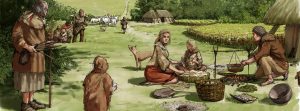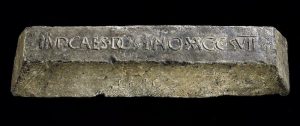Upper Nidderdale is an area that has seen many changes,

From Neolithic people to Celts have lived in this picturesque area.
The local river Nidd was named by the Celts, (Nidd means sparkling). It was Anglo-Saxon times that settlements started to any degree with farms around the tops of hills. The Romans had used this area for Lead Mining, which continued until recent times.
Just before the William the Conqueror invaded England, the Archbishop of York acquired land in the area, and his manor, which extended from Wath to Wilsill, This area was known as the Parishes of High and Low Bishopside
In the 14th Century, the Scots attacked the north of England. This destroyed the local economy. The then Archbishop was granted the right to hold a market and fair at Pateley Bridge. This was to stimulate trade in the immediate area. This market was held for hundreds of years, weekly, every Tuesday.

Markets have died out now, with very few still existing. This market was slowly absorbed into the Ripon markets, which themselves have now gone from an agricultural market and a retail market, to one retail market on a Thursday. The fair took place on the Feast of the Nativity of the Blessed Virgin Mary, which was on the 8th September.
The Feast soon became known as a fair. It has altered over the years, but is still held each year, although now two weeks later. It has become last of the true Yorkshire shows, with a travelling amusement fair. This takes over the Bewerley Park Showground.
As time went on, quarrying and lead mining became a the income for many locals. Nidderdale lead had been used to make the roof Windsor Castle, back in 1363. Marble from Nidderdale was used to make a set of steps at St George’s Chapel at Windsor. Fountains Abbey was made with Limestone quarried at Blayshaw Quarry near Lofthouse.

Throughout the 19th century, the area had a divide, those in farming and those in industry, based mainly near and in Pateley Bridge.
From the 1880s the lead mines were closing, followed very quickly by the quarries. When the 1960s came, the mills, which were focused on rope production, were closing the final doors on industry in the area. Pateley Bridge was most affected, hitting severe unemployment.
It was after the turn od the millennium that the area really started to thrive again, as tourism built business in Upper Nidderdale. Its hardly surprising with such picturesque views and local hstory, as well as nearby Ripon, Harrogate and York within a short drive.
